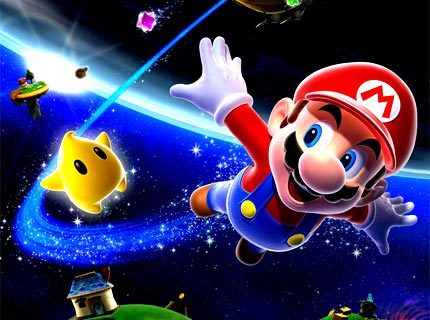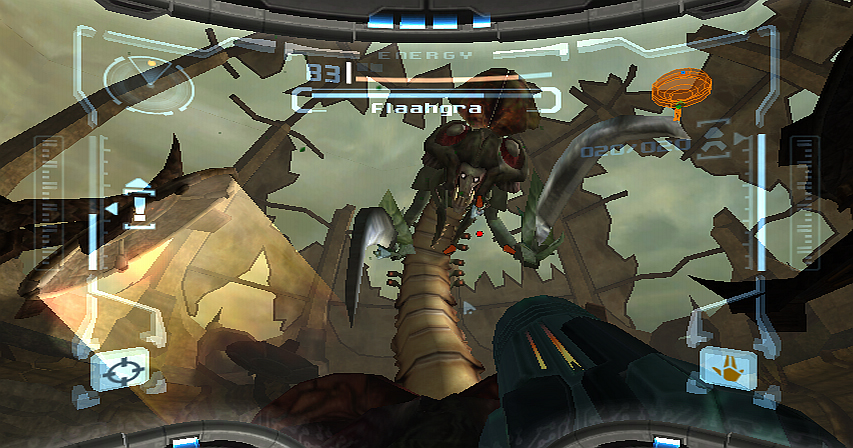This is a series of posts which chronicles my life as measured by the computer games I’ve played; you can find parts 1 and 2 here and here. Let’s finish the journey…
Super Metroid

Image courtesy of Power Cords
So far I’ve been listing games in chronological order, so you might find it strange that I describe a game that was released on the SNES in 1994. The reason is that I discovered this game during my “emulator phase” after finishing university; I never owned a SNES so I decided to see what that console had to offer, and this ended up being one of my favourites.
Super Metroid was not what I was expecting from Nintendo; the company that produced Mario and Zelda, how did they also make this dark, atmospheric game with a design inspired by the Alien films? From the beginning the mood kicked in; exploring what looked like a dead planet with no life signs until you were spotted and things kicked into action, this game was an excellent adventure with memorable bosses, the feeling that if you just looked a bit further you’ll find the next upgrade and an exciting climax ending in a mad dash to escape before everything exploded around you.
Wii Sports

Image courtesy of Fusion Gamer and IGN
Things were changing. Consoles kept pushing for better graphics and more power to produce the same kind of games that we’d already played many times over but this time in high definition. Meanwhile I was starting to settle down, just moved in with my then girlfriend (now wife) and was getting bored of the same kind of gameplay experiences. Enter the Nintendo Wii and the one game which, although not the greatest by a long shot, explained precisely what the Wii was about: Wii Sports.
There isn’t really much to say about it; it’s simply a collection of mini-games focused on tennis, boxing, bowling and golf but it’s the way you play them using the Wiimote and motion controls that makes it different. No other console had done motion controls like this, or at least this simply before; even my wife wanted to play games with me – and somehow she can still beat at boxing every time! For it’s time the Wii was a breath of fresh air to me because it made games fun again.
Super Mario Galaxy

Image courtesy of Super PolyPixel
I bought a Nintendo Wii because it was the perfect party games machine which would get my friends involved but also for another reason; I’m a hardcore gamer at heart and wanted to play proper Nintendo games again. And Super Mario Galaxy was the next game I got for it.
In essence it evolves the formula laid down years ago by Super Mario 64; Mario collects stars to open more levels, fights Bowser, saves Princess Peach (again!) etc. etc. But this time in space! Which actually opens up new ideas because gravity plays a part now; Mario could literally run around a small planetoid and not fall off it, or jump to a nearby object to fall into that gravity well. Once again I was amazed with the ingenuity of Nintendo who never seem to run out of creative ideas.
I also distinctly remember this as one of the few games where I didn’t have to battle with the camera controls; the fact that you could manoeuvre Mario in all kinds of planes made me think this would be awkward but I can’t remember a time where things got in the way, the camera just followed him almost perfectly.
World of Goo

Image courtesy of Edge
This most recent generation of consoles brought something new to the mix; having internet connectivity meant that games could be downloaded to the console for the first time ever. World of Goo was my first ever downloaded, unboxed game.
To describe World of Goo is a bit difficult. Essentially it is a puzzle game where you have to connect goo balls together into structures and help the remaining goo balls to escape the level via a pipe – sounds similar to Lemmings, doesn’t it? But the game as a whole is far more than that; it has an artistic vision to it, playful and not taking itself too seriously. There is something of a plot even, told via signposts you see in each level, though not strictly a linear story, more based around themes than anything else. And it has an amazing soundtrack.
The problem in describing this game is that my basic words don’t do it justice; I think it is simply one of those games you have to experience for yourself.
Metroid Prime Trilogy

Image courtesy of Pure Nintendo
One regret I had in never owning a Gamecube was that I never got to play Metroid Prime, a game that so many people had misgivings about (“Metroid in 3D? In the first person? Impossible!”) yet was actually critically acclaimed and ended up being one of the best games on that system. Fortunately I did get to play it on the Wii, plus it’s two sequels and with enhanced motion controls, all in one package.
In terms of adventure I felt that Metroid Prime was better than Super Metroid. It had the same atmosphere of Super Metroid and the same sense of adventure but felt much more immersive. The addition of the scan visor also meant that plot details could be viewed (or not if you didn’t want to), so you would read journal entries from the enemy describing how “The Hunter” (a.k.a. you) was slowly infiltrating their bases. And I thank Nintendo for adjusting it to use the Wiimote and create a real first-person control scheme.
Metroid Prime 2: Echoes was the Gamecube sequel and followed in roughly the same footsteps as Prime but introduced that old gameplay staple of the “dark world”: splitting the world into both light and dark meant double the size of the levels and some ingenuity of puzzles. Personally I found this game difficult; I still enjoyed it but every time you entered the dark world it would sap away at your health, forcing you to find shelter in special “safe zones”. This meant things were more tense when you’re trying to escape enemies whilst also desperately trying to find the next safe zone. Plus there were some sections which almost had me pulling my hair out in frustration; in general, it was harder than Prime.
Metroid Prime 3: Corruption was the true Wii sequel to the trilogy and it showed; designed completely with the Wiimote in mind it added certain actions like flicking the nunchuk in a whip-like fashion and using the Wiimote in certain situations by having to twist it this way and that, plus the graphics were much improved. Overall it was a solid sequel and altogether one of the best deals I’ve purchased.
The Legend of Zelda: Skyward Sword

Image courtesy of G4
And so to my most recent game which I’m still trying to complete after a year! (Not because I’m bad but trying to find the time to devote to it is tricky for me now).
There is one reason why this game is great: pretending the Wiimote is a sword, like everyone imagined they would do when they first heard about the Wii. Swinging in a particular direction makes Link swing exactly the same way, which actually adds some strategy to the usual hack-and-slash action. For instance, I could swing horizontally but the enemy could block that direction; only a vertical attack would work. Things get interesting when enemies keep dodging and blocking your attacks forcing you to adapt as well.
Apart from the sword your other items have motion controls too; swing you Wiimote like a whip to use the whip, pull back your bow string as you would expect, push your shield hand forward to perform a shield bash attack, and so on. Finally Nintendo made good on their promise of motion controls being the future.
The End?
And that’s my life so far. Like I mentioned in part 1 I’m not sure I’ll be able to keep playing lengthy games anymore, partly due to lack of interest and partly due to time constraints. I’ve got a few games on my phone which may be more manageable, but I’m guessing I will now wait until my children are old enough to want to play computer games too before I start again.
No comments:
Post a Comment